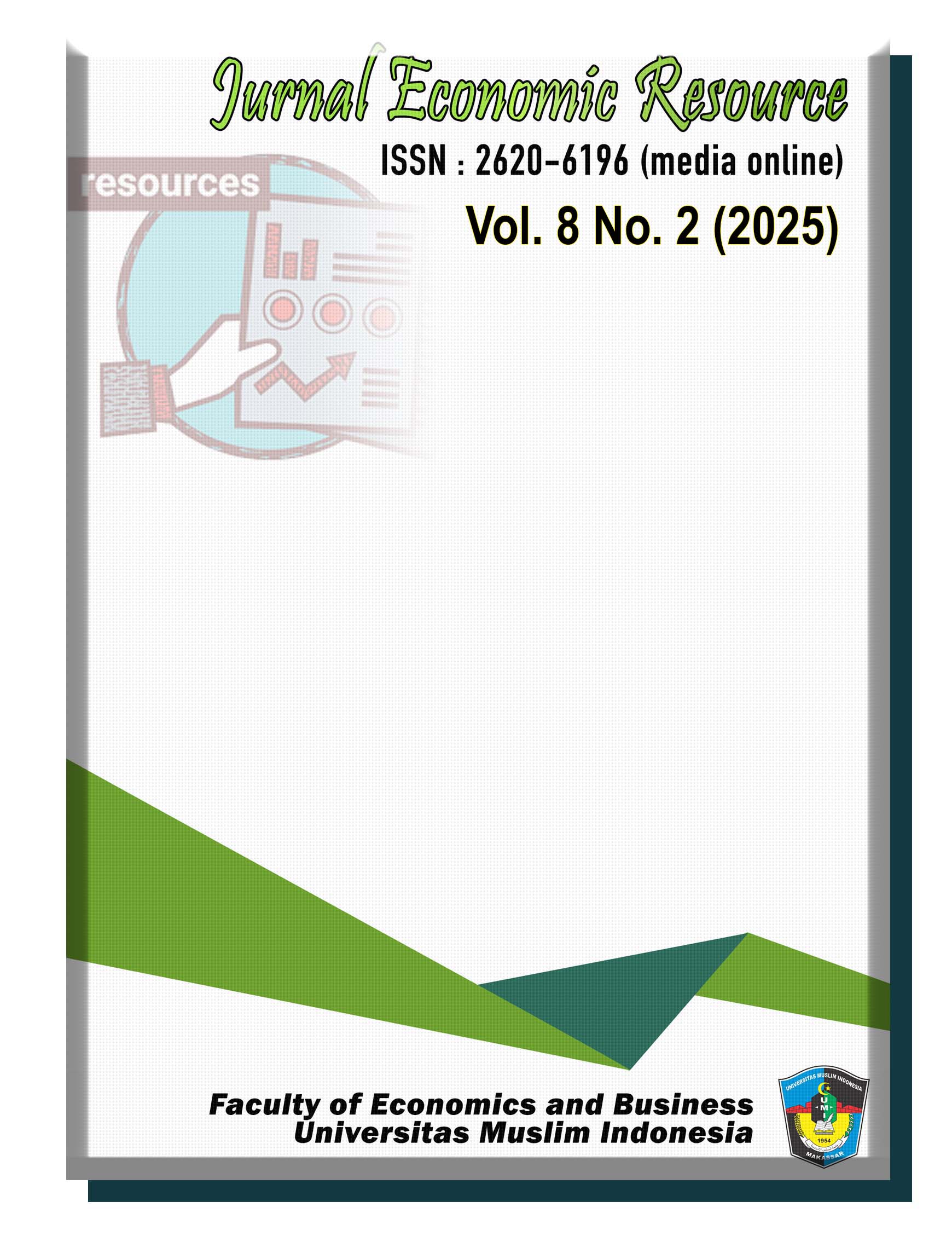Main Article Content
Abstract
The aim of this research is to analyze the influence of Current Asset Saving Account (CASA) and Fee-Based Income (FBI) on ROA. The research method employs quantitative analysis. The data used are secondary data from the financial statements of PT. Bank BCA. The data analysis technique uses multiple linear regression. The results of the study provide information that the magnitude of ROA possessed by Bank BCA during the period 2015-2023 is significantly determined by the existing CASA and FBI values. When Bank BCA has high CASA and FBI values, it also results in a high ROA value. Conversely, when Bank BCA has low CASA and FBI, it also results in a low ROA for Bank BCA. However, partially, CASA does not determine the magnitude of ROA values of Bank BCA
Keywords
Article Details
References
- Fitri, R., & Nuraini, D. (2023). Effect of CASA, Fee-Based Income, and Intellectual Capital Towards Profitability of Islamic Banking in Indonesia. Muqtasid: Journal of Islamic Economics and Banking , 14 (1), 35–50. https://doi.org/10.18326/muqtasid.v14i1.35-50
- Intan, PS (2024). The Effect of Fee-Based Income (FBI) and Current Account Savings Account (CASA) on Profitability in Islamic Commercial Banks in… .
- Monika, A., Hakim, AL, & Ahmad, AN (2022). The Effect of Current Asset Saving Account (CASA) and Fee-Based Income (FBI) on Return on Assets (ROA) at Bank Jabar-Banten Syariah (BPJS) for the 2016-2020 Period. Pelita Bangsa Journal of Islamic Economics , 07 (02), 138–147.
- Rachma, AF (2023). The Effect of Fee-Based Income, Operating Costs, Operating Income (BOPO), and Third Party Funds on the Profitability of Bank Muamalat Indonesia. Angewandte Chemie International Edition, 6(11), 951–952. , 5–24.
- Renjani, R., & Hendrawati. (2020). Analysis of the influence of current account savings account, operating efficiency ratio, and fee-based income on profitability in Islamic foreign exchange commercial banks for the period 2015-2019. Indonesian College of Economics , 1–16.
- Santoso, IAA (2024). On the Profitability of Conventional Banks Listed on the Indonesia Stock Exchange ( BEI) for the 2019-2022 Period Thesis .
- Silitonga, D. (2022). Financial Performance and Bank Profitability (1st ed.). Zahira Media Publisher.
- Sugiyono. (2021). Qualitative Quantitative Research Methods and R&D . Alfabeta.
- Syahrir, LO, Ali Nurdin, A., Heryanto, HK, & Syarief, ME (2023). The Effect of CASA, FDR, CAR, and Inflation on ROA in Islamic Commercial Banks in Indonesia. Journal of Applied Islamic Economics and Finance , 3 (2), 275–285. https://doi.org/10.35313/jaief.v3i2.3752
- Wardana, GK, & Noer Aisyah Barlian. (2022). Determinants of Islamic Banks on the World Capital Structure. IQTISHODUNA: Journal of Islamic Economics , 11 (2), 195–206. https://doi.org/10.54471/iqtishoduna.v11i2.1874
- Wira, D. (2014). Fundamental Stock Analysis . Exceed.
References
Fitri, R., & Nuraini, D. (2023). Effect of CASA, Fee-Based Income, and Intellectual Capital Towards Profitability of Islamic Banking in Indonesia. Muqtasid: Journal of Islamic Economics and Banking , 14 (1), 35–50. https://doi.org/10.18326/muqtasid.v14i1.35-50
Intan, PS (2024). The Effect of Fee-Based Income (FBI) and Current Account Savings Account (CASA) on Profitability in Islamic Commercial Banks in… .
Monika, A., Hakim, AL, & Ahmad, AN (2022). The Effect of Current Asset Saving Account (CASA) and Fee-Based Income (FBI) on Return on Assets (ROA) at Bank Jabar-Banten Syariah (BPJS) for the 2016-2020 Period. Pelita Bangsa Journal of Islamic Economics , 07 (02), 138–147.
Rachma, AF (2023). The Effect of Fee-Based Income, Operating Costs, Operating Income (BOPO), and Third Party Funds on the Profitability of Bank Muamalat Indonesia. Angewandte Chemie International Edition, 6(11), 951–952. , 5–24.
Renjani, R., & Hendrawati. (2020). Analysis of the influence of current account savings account, operating efficiency ratio, and fee-based income on profitability in Islamic foreign exchange commercial banks for the period 2015-2019. Indonesian College of Economics , 1–16.
Santoso, IAA (2024). On the Profitability of Conventional Banks Listed on the Indonesia Stock Exchange ( BEI) for the 2019-2022 Period Thesis .
Silitonga, D. (2022). Financial Performance and Bank Profitability (1st ed.). Zahira Media Publisher.
Sugiyono. (2021). Qualitative Quantitative Research Methods and R&D . Alfabeta.
Syahrir, LO, Ali Nurdin, A., Heryanto, HK, & Syarief, ME (2023). The Effect of CASA, FDR, CAR, and Inflation on ROA in Islamic Commercial Banks in Indonesia. Journal of Applied Islamic Economics and Finance , 3 (2), 275–285. https://doi.org/10.35313/jaief.v3i2.3752
Wardana, GK, & Noer Aisyah Barlian. (2022). Determinants of Islamic Banks on the World Capital Structure. IQTISHODUNA: Journal of Islamic Economics , 11 (2), 195–206. https://doi.org/10.54471/iqtishoduna.v11i2.1874
Wira, D. (2014). Fundamental Stock Analysis . Exceed.

